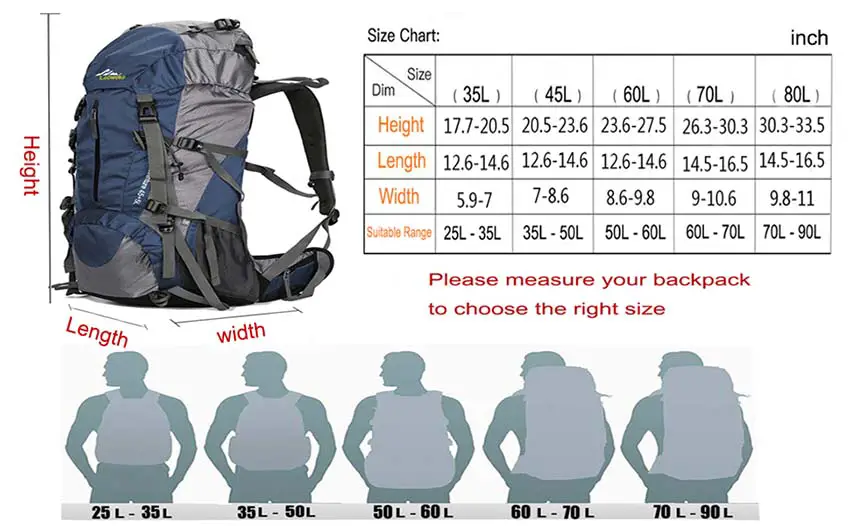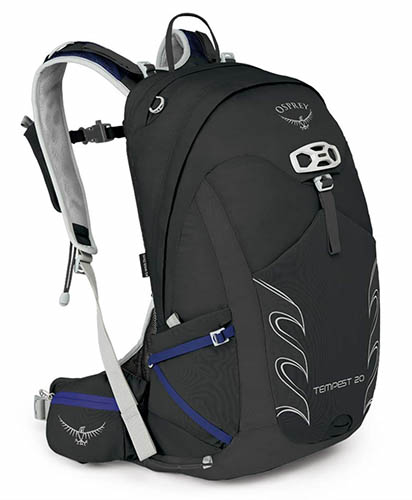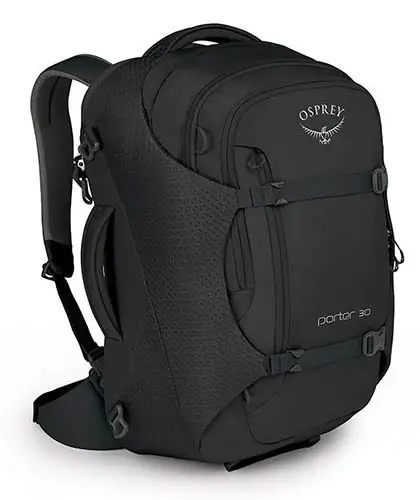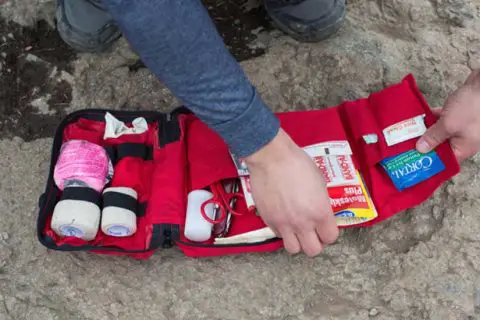Whether you are an adventurist or a frequent traveler, one of the essentials that you will never trade for anything and will almost always carry along with you is the backpack. A backpack must have the capacity to handle all your needs to survive outdoors.
To this end, it is critical to know how much capacity your new bag offers, or better still, how to determine the volume of the backpack. There are different ways to achieve this goal, and this piece seeks to bring that to the fore.
To complicate the matter, backpack companies now use different units of measurement in the description of capacity and volume. Generally, they will express the volume of their packs using cubic inches or liters. Some companies will present the volume in sizing charts for consumer convenience—making it easy for them to appreciate the volume.
It is essential that backpackers think of their pack sizes in liters. The metric for sizing is conventional and as such, makes it easy to choose the right pack for your needs.
| Name | Capacity | |
|---|---|---|
| Osprey Packs Tempest | 20L | PRICING |
| Osprey Packs Sirrus | 24L | PRICING |
| Osprey Packs Porter | 30L | PRICING |
| Osprey Packs Farpoint | 40L | PRICING |
| Osprey Packs Stratos | 50L | PRICING |
| Osprey Packs Atmos | 65L | PRICING |
| Osprey Unisex Ace | 75L | PRICING |
What Do Size and Volume Mean?

The first thing is to understand how to measure a backpack’s volume. This can be carried out in two ways—taking into perspective how much the bag can hold, measured using liters and cubic inches and the size of the pack where you judge the backpack dimensions.
Let’s look critically at the volume of a backpack. Whether the measurement is put in liters or cubic inches, it’s the manufacturer’s prerogative. Some companies may have both options, ensuring that reading is quite easy to understand. There is nothing as being confused when it comes to measurements.
Now, let’s talk about the size of the backpack. To ascertain the size of a bag, you will take a careful look at its dimensions. You will be familiar with the length, width and the depth of the pack. The truth is, with these values known; you can calculate the volume of the pack. But how tricky can this be? Getting accurate measurements of these dimensions will be difficult in reality.
If the size of the backpack is as essential as volume; it gives you the information on how the bag will sit on your body. For example, if you know the length, you can tell where the backpack will end as against your lower body or torso.
What Makes Up the Volume of a Bag?
As stated above, the volume of the bag can be determined by figuring out its dimensions. But how do the manufacturers arrive at the volume of a backpack? The volume indicates what a pack can carry, and most designers look at it from that perspective. In other words, they will consider how much each compartment can store. In that regard, they will measure the storage capabilities of the main compartment, including the smaller pockets—both inside and outside. All of these storage compartments will be put into consideration, whether closed or open.
The measurement methods differ as not all manufacturers will go about their volume measurement this way. For some companies, the open pocket on the exterior will also be considered; they’re mesh pockets that are particularly for storing water bottles. As a result, the volume may be stated as being larger and may not necessarily be right—that accounts for the disparities when it comes to the capacities of identical backpacks from different manufacturers.
It may also introduce some form of confusion if you’re trying to compare one pack to another. What you have to do is determine if the manufacturers involved are using the same measuring policy before you go ahead to draw a comparison.

Backpack size chart liters
How to figure out how many liters a backpack is? Another vital thing to hold close to your heart is the unit of manufacture that is used for displaying the volume of the pack. With the volume stated in liters, you should know it was rounded up. That means volume may be precisely inaccurate. That will present you with a good baseline for the backpack’s size and the quantity it holds. By using cubic inches, you can get a greater level of accuracy because the whole number is included.
There is little difference when you measure backpack using inches instead of liters. It may look as simple as converting liters into cubic inches. But the truth is since you don’t have the precise number, the resulting conversion may not give you a value as exact as the manufacturer’s.
For backpacks having a correlated number with their names, they’re simply telling you their size. Take, for instance, a pack with “Osprey Aura 50L.” Osprey is the name of the backpack, while 50L represents the volume of the bag.

Visualizing how much a 50-liter pack can hold may be an issue. But you can eliminate that by using a Nalgene water bottle as a backpack size. The standard Nalgene is known to be a one-liter bottle. So how many liters of Nalgene bottle will fill a typical backpack?

Have it at the back of your mind that if a backpack measurement is in cubic inches, the exact volume is what is advertised because they will most times include decimal point instead of a rounded-off figure. Backpack companies will often than not provide conversion chart from liters to cubic inches and vice versa.
As a rule of thumb, 61 cubic inches equals 1 liter to help you with conversion as the case maybe.
Some brands will come up with different packs for men and women. The essence is to make it a better fit body shape and also hip sizes while you hike. People have different body types, and the sizes come in their numbers too from one brand to another. Don’t be discouraged by the gender correlation that is attached to the pack. Some male folks may even end up choosing a female pack because of the fit.
Measuring the Volume

Most times, the volume is described on the bag. But if you doubt the value for the volume capacity or you want to confirm the claims of the manufacturer, there are things you can do to calculate the liter capacity of the bag.
One of the conventional yet straightforward methods is by using small Ping-Pong balls or even dried beans in determining the volume of the bag. Make arrangement for enough balls, or you could collect enough dried beans and start.
- Using a measuring cup, fill your backpack with dried bean or ball
- Immediately the pack is full, write down the number of cups required to fill the bag to full capacity
- With regards to the cup size and the number of cups used, you already have the value in liter capacity of your bag or pack
If the measuring cup is rated 500ml capacity and it took 40 cups to fill the bag up, the total capacity stands at 20 liters. You can fill out the outer pocket too if you wish.
Common Backpack sizes
A 20-liter Backpack size Consideration

A 20-liter backpack is ideal for your daily travels. If your trip starts in the morning and ends at night, then that should be ideal for your needs. The size can be limiting, and there will be a lot of compromises. But how big can you consider a 20-liter to be?
A 20-liter bag should meet the following needs:
- Your 20-liter bag will fulfil the following needs
- Your bag is perfect for a one day travel
- When filled, it should weigh around 7-9 kg, which depends mostly on the material used
- The empty bag weight is put at 800 to 900 grams
- In an ideal situation, the bag should contain a load of the right sleeping mat, a bottle, a pair of trousers, a jacket and also a pillow
A 25-liter Backpack size Consideration

Again, a 25-liter backpack is suitable for a day trip. If your need is more than what is stated above—though slightly—a 25-liter bag will do for your troubles. There’s only a little difference between 20 and 25-liter bag.
For your 25-liter backpack, it will meet the following needs:
- It is a good option for a day’s travel. Your best bet is an overnight stay
- The bag should contain an extra pair of clothes more than the specification above; it should accommodate your laptop too
- The full capacity bag should weigh around 10 kg
- The empty bag weight should be about 900 grams to a kg
A 30-liter Backpack size Consideration

If you are going on a weekend trip, the 30-liter bag is a perfect fit. Such trips may take three days max. You will be able to carry sufficient options to survive for some days.
The size of a 30-liter backpack will meet the following needs:
- Asides from daily wears, water bottles, including other items covered above—you should be able to have a sleeping bag in it. Water, food, spare clothing and other essentials should be included too
- The weight of the empty bag is somewhat between 600grams to 1000 grams in line to the material and design
- The full capacity should ideally weigh 12 to 13 kg
- The bag is ideal for use on weekends
A 40-liter backpack size Consideration

The 40-liter backpack falls under the medium rucksack bags. It is perfect for hiking, overnight camps and other similar outdoor activities. They can handle loads heavier than discussed earlier.
The size of a 40-liter backpack will meet the following needs:
- The bag weight is around 1kg to 1200 grams when it is empty
- The full capacity weight of the bag will be around 12 to 15 kg
- The bags will have all the features on a 30-liter backpack. However, it will accommodate more for the extra padding and storage space. It should contain a sleeping bag or camping gear and other utensils
- The 40-liter backpack is perfect for overnight camps and also other high demand needs
50 vs 65-liter pack – How to Choose?

Are you having a hard time deciding on a 50-liter vs 65-liter backpack? The choice you finally settle for will hugely depend on what you intend to carry. The weight of a 50-liter bag should be at 13 to 15 kg; that of 65 kg bag should weigh 18 to 20 kg.
Carrying weight such as 20 kg may not be a great idea. With a higher bag, you’ll be tempted to add more stuff. A 50 kg weight backpack will be perfect for carrying what you need. You may want to opt for a larger bag if you’re with a family. But a 50 kg will still be a recommended choice—you can carry a 20 kg bag alongside the 50kg to share the load.
65 vs 75-liter backpack – How to Choose

Another confusing size is the 65 vs 75-liter backpack that travelers tend to face regularly. On recommendation, a bag of 75-liter will not be ideal—we know bigger accommodates more, but would you like taking along your entire wardrobe? And who needs all that?

What is important here is your packing style. Stay within the requirements. You can break your back using a high capacity bag. You can’t enjoy your trip having such a load on your back. It will cause discomfort and make the entire trip a shallow of itself.
Which Backpack is Right for me?
Now, you have a clear understanding of how to arrive at the right volume for your backpack or any other bag for that matter. So, what is the ideal bag for you? It shouldn’t be that hard to figure out with what you have read here so far. We all have in in our head the perfect backpack for us long before the hiking or any kind of adventure start. What matters here is going with convenience so you can have the best of your outdoor time.
Backpack volume may be pretty confusing, especially with the array of choices in the market—with several of them looking similar in size. Go for the choice that suits your needs, and the volume measurement may just play a key role in your decision.



